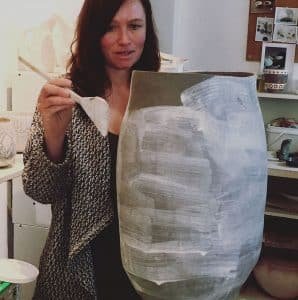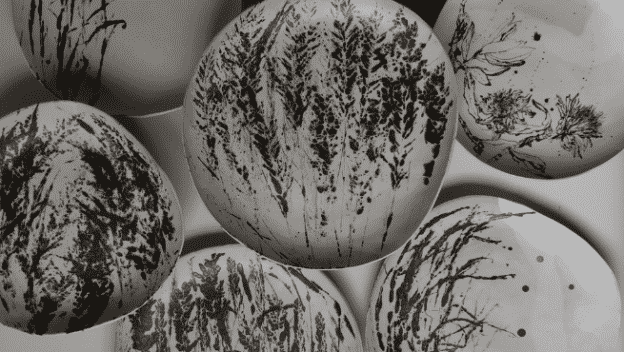In this workshop we will be using an ancient technique with a bit of a twist. We will be making prints using a Majolica technique. This is a decorative ceramic technique of painting with glaze materials on top of an opaque, tin-based white glaze. In this class I will show you how to use different materials to make prints on top of a glazed piece. You can combine the printing with painting which I will also briefly demonstrate. I will use a platter for this demonstration but have used this technique successfully on large vessels.
I work with a rather restricted colour palette as I love natural colours and I prefer using oxide mixes because the colours are always interesting and never flat or dull. I will be using a high tin-based white stoneware glaze however you can experiment with this technique on different glazes and with different colours. I will share with you my oxide mix recipe. The colour will vary and change depending on the ingredients in your glaze. I suggest playing around with different oxides and glazes. Use test tiles to test the colours and feel free to just explore.
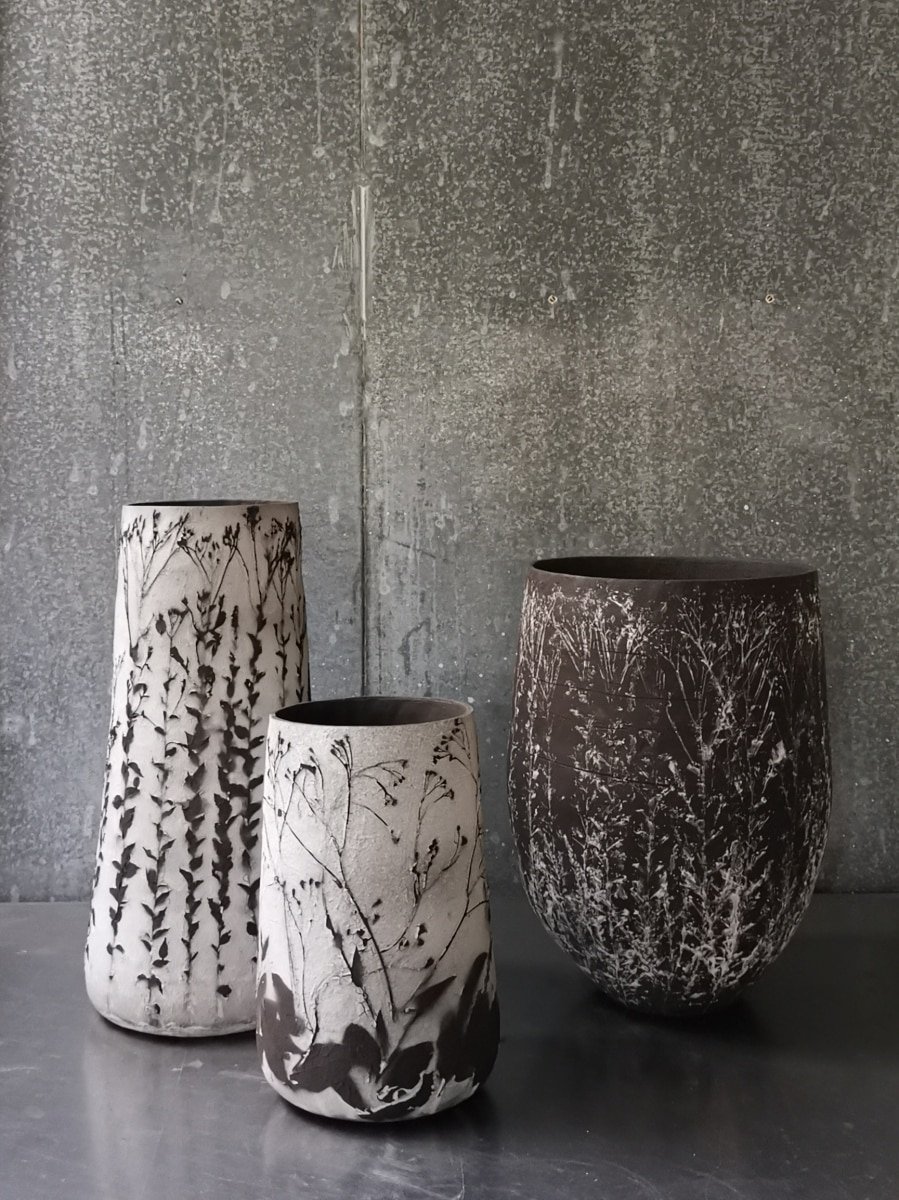
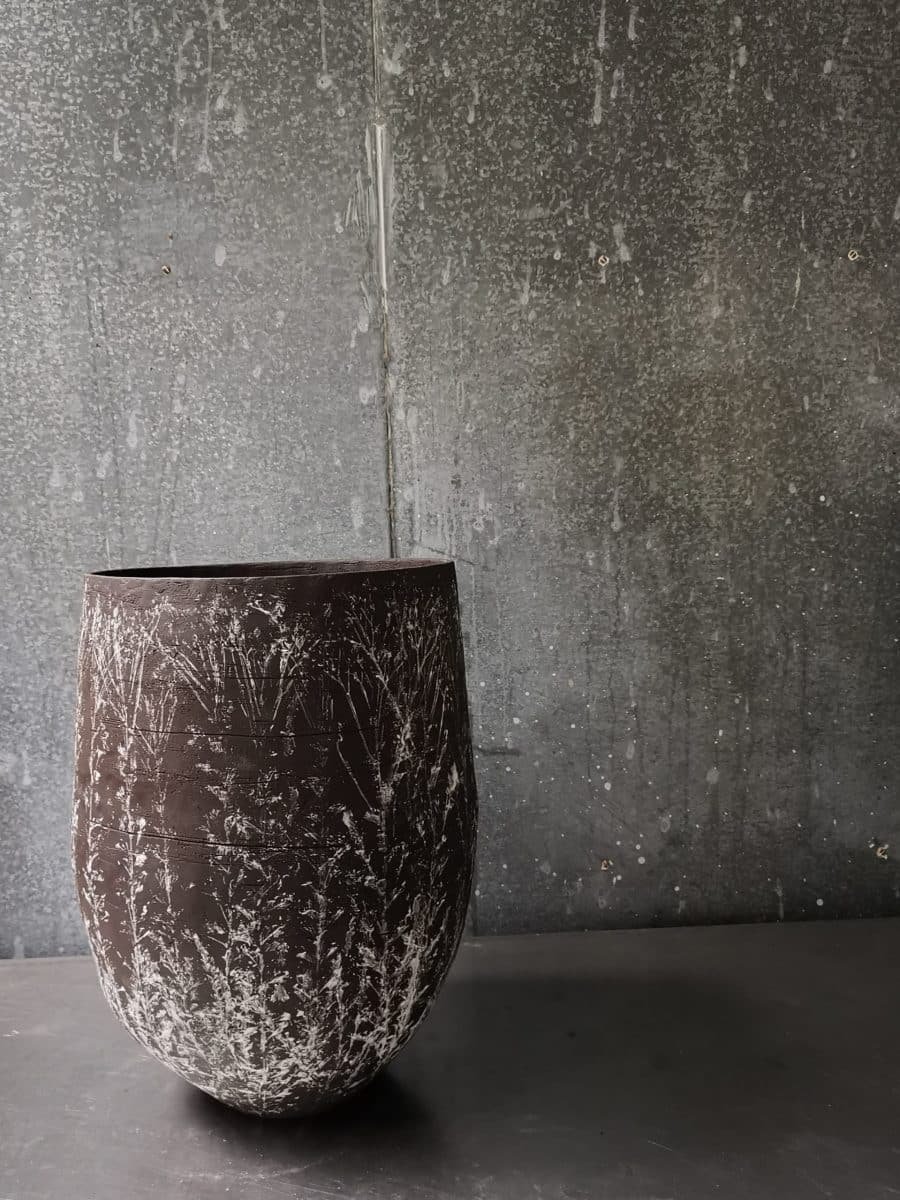
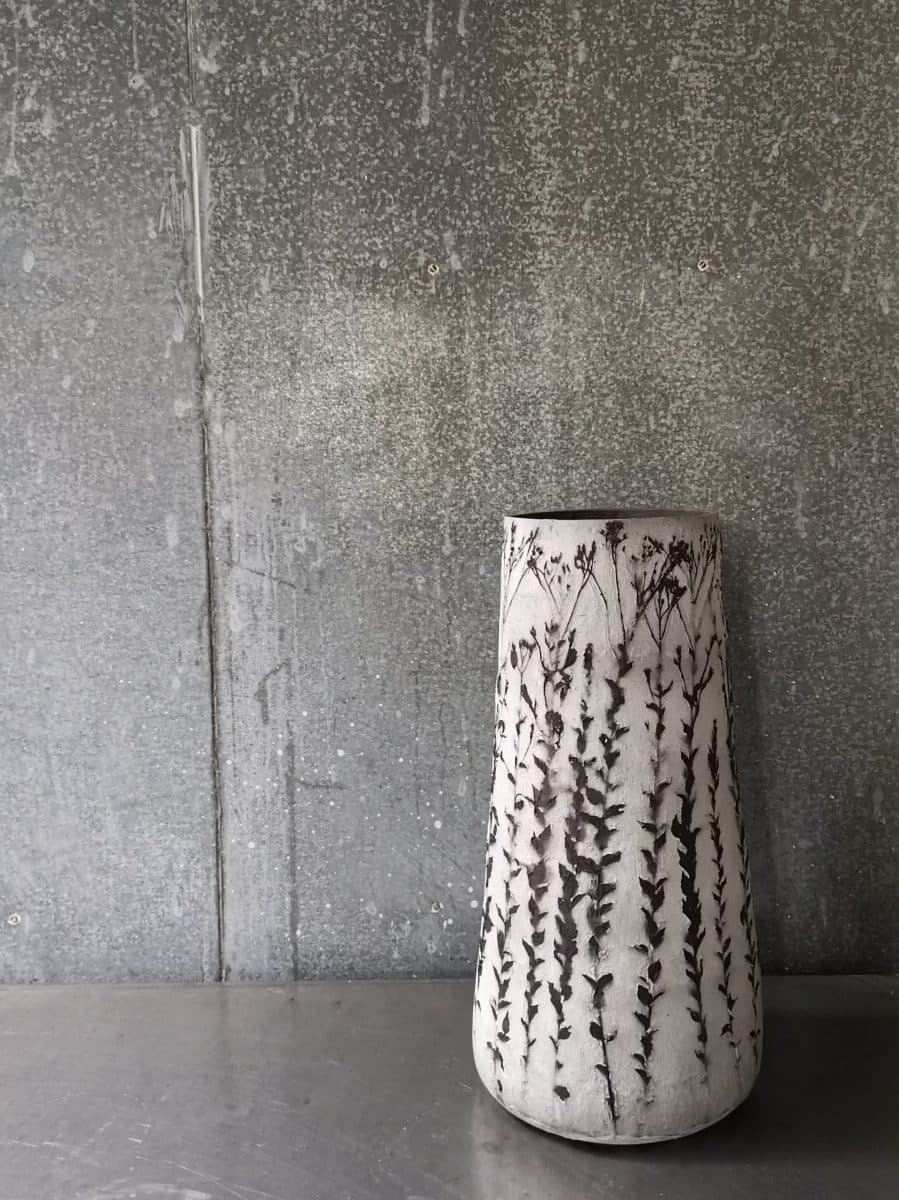

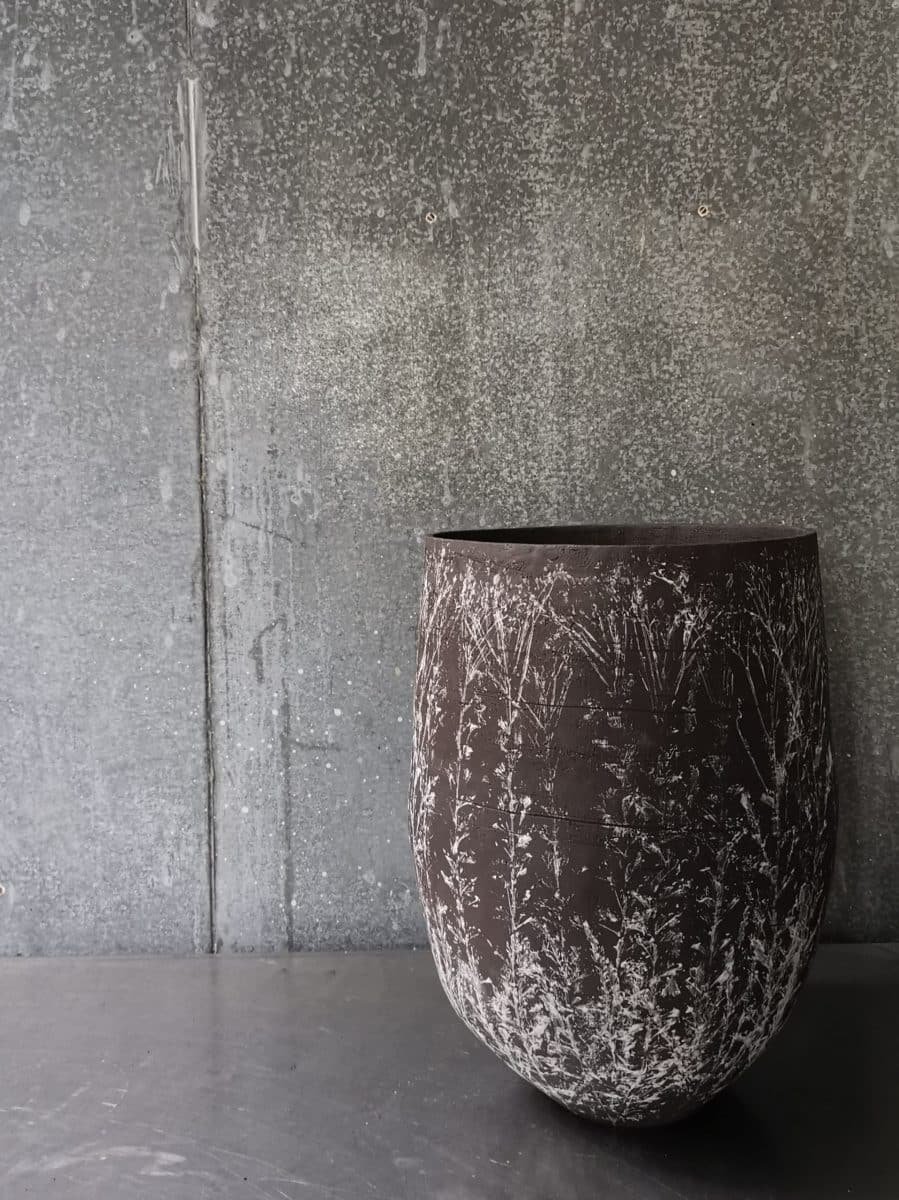
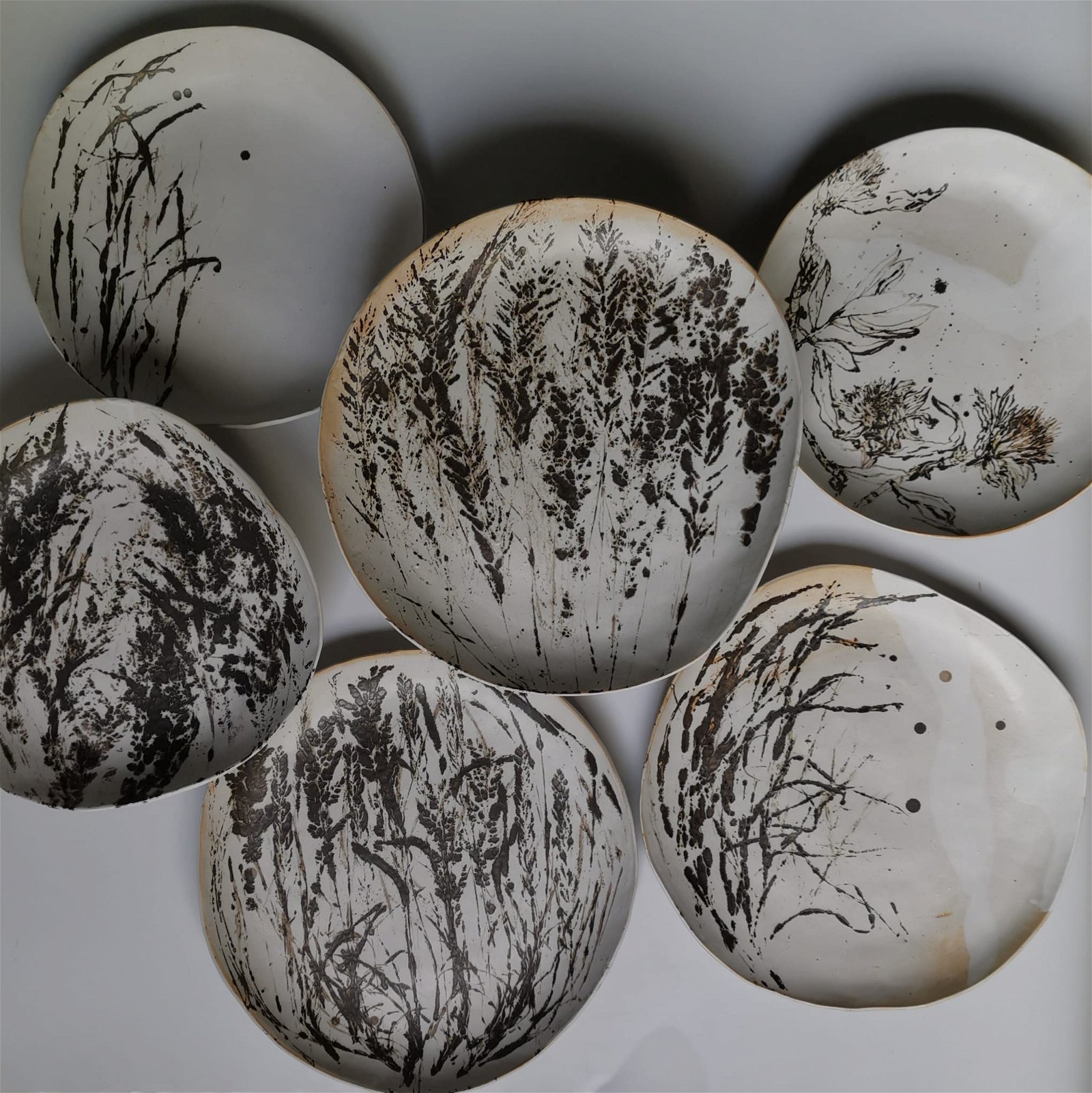


What you need for Majolica printing:
- A bisque fired piece
- White glaze preferably tin-based – you can work with earthenware or stoneware whichever you prefer
- Oxide mix – see the recipe for the bronze slip below
- Some materials to print with, anything that absorbs moisture will work or something that the slip we are going to use will stick to. I like to use grasses, soft plant materials, felt cut outs, lace, sponge stamps etc.
- A spray bottle with water
- A spray bottle with some diluted Gum Arabic – I buy already liquified Gum Arabic which I further dilute so I think if you are mixing from scratch a 1% solution should be adequate.
- Newsprint paper
- A glass/plastic sheet and brushes to ink up your printing materials
- Some soft brushes for painting onto the glaze
Bronze slip recipe:
- 120g Terracotta Slip
- 65g Manganese Dioxide
- 5g Copper Oxide
- 5g Cobalt Oxide
Add enough water so the slip is quite runny, the clay and oxides particles are heavy and will naturally precipitate to the bottom so you will have to stir every time before you use it. We will be adding water during the inking process, the printing material needs to be rather wet.
When you buy this workshop, you get my Workshop:
Join me online for my workshop and Q&A. Ask me any questions about anything during the workshop or face-to-face in our Q&A session.
Join my Live Q&A
Join my Live Q&A where you can talk with my face-to-face and ask questions about my process.
You Get Lifetime Access to the Replays
The workshop Q&A will be recorded, and you will have lifetime access to it. You can watch it online, or download it to your device to watch offline at any time.
I don’t believe that I chose clay, I think clay chose me. I just took a really long time to get the message.
My mother is a potter and has been one since before I was born. As kids, we occasionally played in the studio but I never considered it as a career option.
In every stage of my life clay found me. In 2013, after having considered literally most other career options a friend suggested that I start selling my ceramics. It was merely a hobby at that point but I signed up for a market a couple of weeks later and started my new journey into clay. Since then I have been blessed with amazing teachers in life and in clay including Kim Sacks and John Shirley.
Now I fill my days building beautiful vessels and experimenting with new techniques. Ceramics is a treasure trove filled with infinite possibilities. I believe you can explore and experiment your entire life and you will still not have tried everything there is to try at the end.
I love to draw and try to combine drawing and ceramics wherever I can. The prints for my porcelain work I create by stitching hand-drawn flowers onto the artist’s canvas. I can then recreate an image in clay using the impression left behind by the stitching.
I also enjoy sgraffito which is a form of decoration made by scratching through a surface to reveal a lower layer of a contrasting colour or scratching directly into the clay body and inlaying colour into the grooves.
My primary method of construction of pieces at the moment is hand-building. Each of my creations is created by using slabs, coils and pinching.
Since starting to create art full-time, I’ve been searching for the meaning or reason behind what and why I create. As the world came to a halt with Covid-19 and I slowed down, there suddenly was nowhere to go and no pressure from outside to produce. For the first time, I could focus entirely on the joy of creating. I am no longer searching for a reason to create; I create to experience that joy and to learn how to share that experience with others.
Instagram: https://www.instagram.com/eyleneclifford_ceramics/
Course Content




